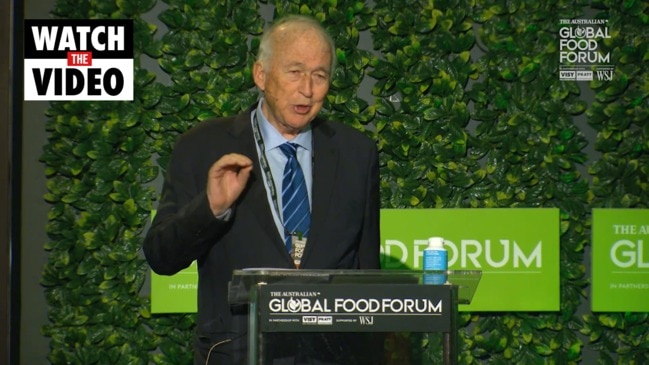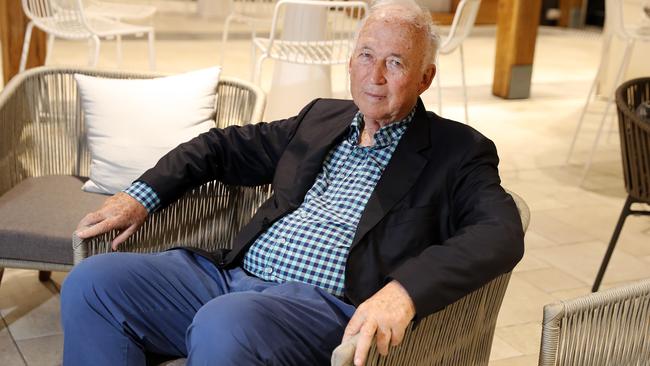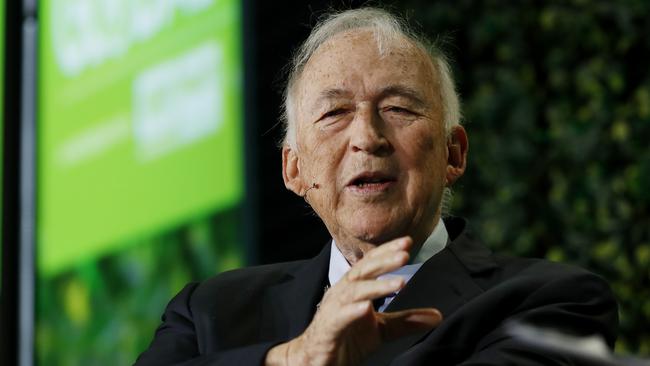Hungry Jack ups prices to combat food inflation and the cost of building new restaurants
Hungry Jack’s billionaire founder Jack Cowin faces soaring construction costs for new restaurants and has upped menu prices to counter rising food inflation.

Billionaire fast food king Jack Cowin has been forced to raise menu prices at his Hungry Jack’s chain to counter the rising cost of food, energy and staff.
And the average cost of building a new Hungry Jack’s restaurant has blown out by as much as 20 per cent thanks to soaring construction costs.
But Mr Cowin is upbeat about the outlook for his Hungry Jack’s chain in Australia, even as cost-of-living pressures squeeze household budgets, arguing that families will still see the value of stopping by one of his 450 stores for a meal or family treat.
The strength of the Hungry Jack’s network and business model helped it thrive through the Covid-19 pandemic and the worst of lockdowns and travel restrictions, in part due to its drive-through options and home-delivery services. It also attracted diners who couldn’t visit other shuttered restaurants.
The latest accounts for Competitive Foods Australia, the private Hungry Jack’s empire owned and chaired by Mr Cowin, show the strength of its operations during the pandemic.
Revenue lifted to $1.774bn over the 2022 financial year, up from $1.674bn for 2021.
Profit for the 12 months to June 2022 rose by more than 50 per cent to $99.9m, although the bottom line was boosted by the sale of a subsidiary business during the period.

“We didn’t suffer a downturn in the lockdown because drive-thrus and home delivery – those aspects increase because of low customer contact and things like that. So, unlike the pubs and restaurants where they had to close or operate under very restricted certain circumstances, our business actually was stronger,” Mr Cowin said.
That strength continued into the new financial year, said Mr Cowin, who is also a major shareholder and chairman of ASX-listed Domino’s Pizza and who has an estimated wealth of $4.82bn, according to the The List – Australia’s Richest 250 published by The Australian.
“On top of that we are running this year, June to the end of October, I think around 5 or 6 per cent growth in sales.”
Cost pressures, however, had become a rising headache for the Hungry Jack’s business, led by rising prices for key agricultural products such as beef, with the burger chain having to pass on those bloated costs to customers.
“Yes we have, we try and cover the costs as they come along. The good news is the Australian beef market has been the highest in the world but we are starting to see signs of that now coming back.
“So that’s a good omen for kind of starting to offset some of the other cost increases of energy and things like that, that are obviously increasing.
“We’ve had long-term contracts for energy and that hasn’t really impacted us that much but labour costs continue, have continued to grow, most costs for most businesses have continued to grow and we are no exception.”

Mr Cowin estimated that prices on his Hungry Jack’s menu have gone up between 4 and 5 per cent over the past 12 months.
However, another main source of cost pressures on the business was the cost of constructing new restaurants. Although this wouldn’t limit the company’s ambitions to build between 10 to 15 stores over the next year, it had to be factored in when considering the amount of sales a new restaurant would generate.
“That is one area of costs that are continuing to grow – construction cost; construction costs are increasing significantly. That is something that we continue to wrestle with,” he said.
“I think we spend probably $50m or $60m a year reinvesting back into the business. But we have to manage that store rollout because of the cost of construction and materials.
“And that means you need to have your sales continue to increase in order to cover that added cost of investment. That’s a challenge. How to get the sales to justify what may cost you more to build a new store.”

Turning to outlook, Mr Cowin said he didn’t see any signs of a recession on the horizon, despite a sharp acceleration in interest rates since May which could dampen consumer spending.
“Obviously, if you go into a recession, people stop spending, but I don’t think we’ve seen any sign of that in Australia,” Mr Cowin said.
“I think you have got to also put it in context, like the banking system has never had more cash in it because people went through a two-year period where they couldn’t travel, they couldn’t spend money and so I don’t think there’s been any real reduction in consumer spending in this country.
“And so if interest rates continue to grow and mortgage payments get more difficult, that’s not to say that can’t change, but I think we’ve been relatively fortunate that our rate of inflation isn’t as high as it is in the US, for example, or the UK.
“And when we started the business, Hungry Jack’s, it was more of a Friday night, Saturday, Sunday proposition and that is largely changed now and it’s more of an everyday sort of proposition.
“Value is important to our customers, but there’s an argument you can eat out at Hungry Jack’s probably for a lower cost than sometimes buying from the supermarket.”






To join the conversation, please log in. Don't have an account? Register
Join the conversation, you are commenting as Logout